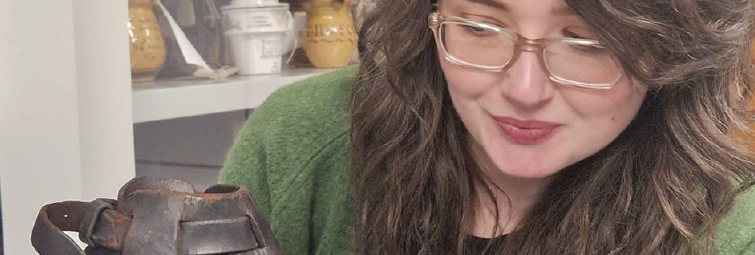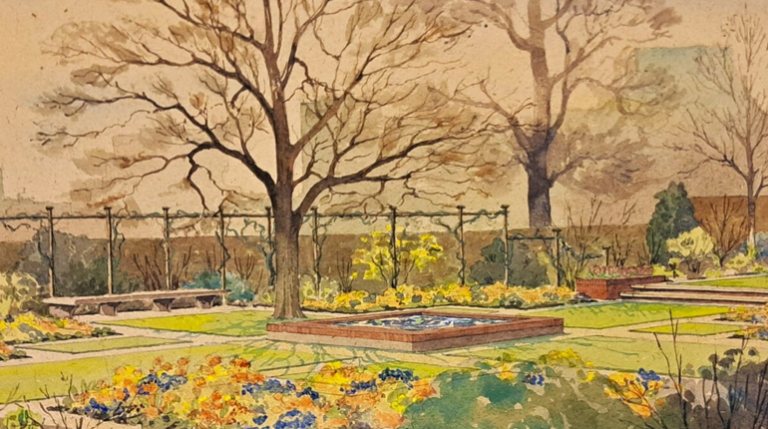Further Afield update blog – August 2024
Tea, walks and royal shows
-
Author
- Tim Jerrome
-
Published Date
- August 16, 2024

An exploration of tea
For centuries, tea has served as a vessel for relaxation, storytelling and casual socialising. When tea is served, the pressure is off, and the gossip is on! Whether brewed with the humble teabag, or cooked up on a stove with spices galore, it transcends language barriers and becomes more than a drink: it is an event. This is the power we want to harness alongside Geeta Luhdra of Dadimas CIC. Using the familiarity of tea, we want to work alongside Reading Community Learning College to introduce women who have English as a second language to the museum world.In preparation for a visit by the group, we’ve been scouring our collections for tea-related material; despite the fact that tea has only recently been grown in the UK, the MERL has a surprising number of items linked to the beverage, showing just how culturally influential it has been. We were also amazed to discover that the University’s Typography department has a horde of early tea advertising, shedding a fascinating light on how it was perceived in the 18th and 19th centuries. This research culminated in an online exhibition on the history of tea. We hope this can be used as a resource to begin discussions about the museum world by those who feel dissociated from it – after all, you can’t drink tea in our galleries, but you can while browsing this!
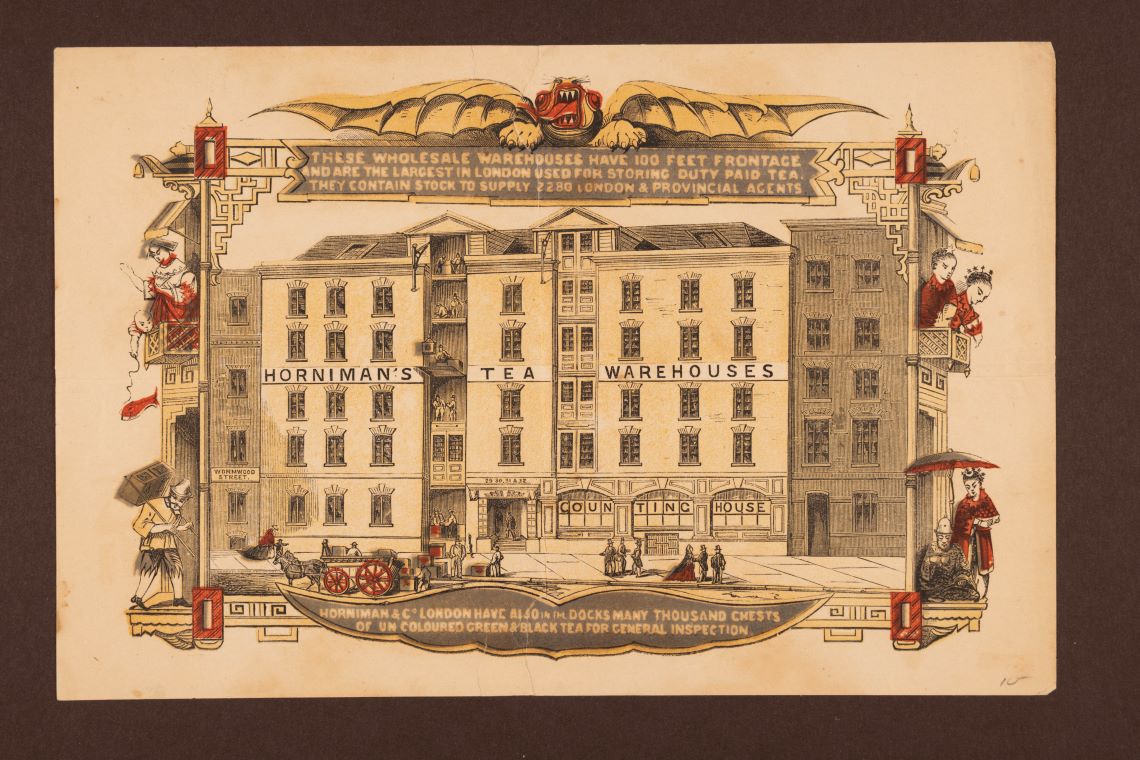
Out in the Forest
Having introduced the group to the collections in a workshop earlier this year, we were keen to support Rainbow Canopy throughout the series of walks they hosted over the summer. Titled Out in the Forest, these walks were held on Forestry England estates and were advertised to various partners and allies of the organisation. Together with Rainbow Canopy, we designed a creative activity for the walks which would have a long term benefit for The MERL. Each walker is encouraged to write their thoughts on the walk, the countryside, or their sexuality onto a small piece of card, in a specific colour. Then, when all the cards are collated together, the text will form the shape of a tree, surrounded by rainbow colours. Therefore, everyone will be able to express their individualism, but will be united together in the final image. We plan for the finished piece will go on display in the MERL Community Case next year. In the meantime, we hope everyone had an amazing time on the walks.
Inclusive Farm at the Royal Highland Show
The popularity and renown of Inclusive Farm continues to grow, and in June they were offered a stand at the Royal Highland show, in order to promote their new skills centre in Scotland. We designed a banner for them to display which gave the basic premise of our partnership, and we hear that it provoked some engaging discussions about how heritage crafts in particular have a role to play in the working lives people with disabilities.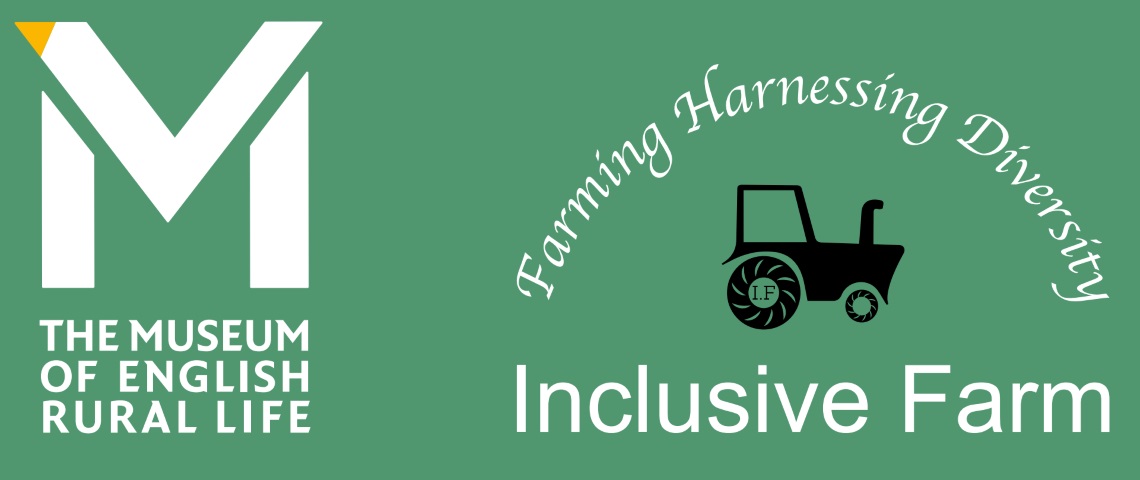
Discussions with Mike, who owns the farm, have also led to some really interesting conversations about how we can improve the non-visual offer at The MERL. This has particularly focused on our galleries, and we were grateful to welcome Rachel and Jonathan, two students who have been working on improving museum accessibility. Jonathan brought along a set of vision-altering glasses from Berkshire Vision, which simulate various visual impairments. These had a profound impact on how we perceive our galleries – for example, the glare of certain spotlights provided a major challenge. More recently, we also trialled a tactile tour of the galleries for the Bracknell Macular Support group, which was a fantastic learning experience.
Changing Perspectives – Series 2
Cast your mind back to the heady days of 2021, and you might remember a particularly popular blog series we published, named Changing Perspectives, which was all about showing off the wonderful work that people of colour are doing in the countryside. Now, as part of Further Afield, we’ve got a new take on the series, focusing on food and farming. Inspired by Navaratnam Partheeban’s Nuffield Report on Black and People of Colour in Agriculture, we’ve assembled interviewees from a whole range of backgrounds, from allotment farming initiatives, to pig farming, and even insect eating. The current line up is as follows:- Perle Wong of Vegecoopia, growing East Asian vegetables in allotments
- Flavian Obiero, aka the Kenyan Pig Farmer
- Ali Yellop and Idman Abdurahaman of Earthtenders, a black-led community garden group
- Taz Khan of London’s Community Kitchen, who is establishing a farm in Harrow
- Omolade Awodola-Peters, an animal scientist studying African livestock practices
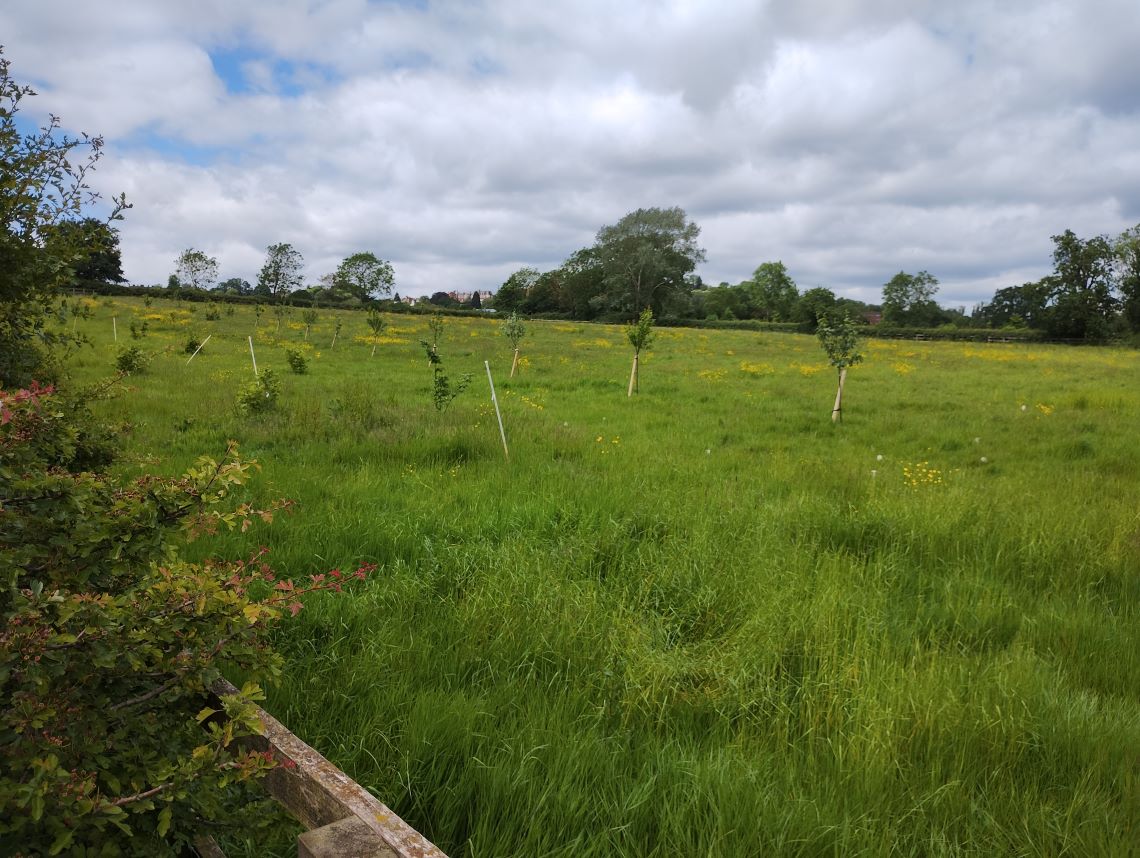
What’s next?
Although I will departing The MERL at the end of this month to begin my PhD study, I still can’t wait to see what comes next with the project, and will continue to be as involved as I can!Inclusive Farm are going full steam ahead with their plans for their new skills centre in Scotland, and are keen to include a heritage aspect to the design of the building. One idea we’ve discussed is for a “corridor of time”, which explains to visitors that many of the skills taught at the site are heritage crafts. Ourselves and Mike both agree that we have a lot to learn from the past, particularly when it comes to developing careers for people with disabilities. From regenerative farming to basket making, the future is the past in so many ways. We’re eager to lend our curatorial expertise to whatever form this heritage space takes in Mike’s new venture.
Having laid an excellent foundation over the last few months, Geeta is planning two sessions for women at Reading Community Learning College to visit the MERL and, quite simply, have tea. We are hoping that the tea will act as a conduit to induct those who have not visited the museum before, and may not have even felt welcome in a formal museum space. These introductory sessions will hopefully pave the way for further collaboration.
Now that Rainbow Canopy’s summer walks have concluded, we are casting our eye to the future, and pending further discussion, we are considering the compilation of a Rainbow Canopy digital archive at the museum. Searching our archives for “LGBTQ” (or anything similar” currently returns no results, and we’re hoping to change that. Alongside photographs of walks and events, we could even undertake a series of video biographies of Rainbow Canopy members across the country, which in some cases will shed light on experiences on working in forestry as an LGBTQ+ person. We’re hoping this idea can gain traction and eventually contribute to a more diverse archival offer.
I would like to extend my personal thanks to all our community partners for being such wonderfully inspiring people over the course of my time on the project. However small of a start we’ve made, I really do think that community-led initiatives will begin to have more of an impact on museum practice over the coming years, making our humble little rural museum a place made by the people, for the people!
Many thanks once again to the Esmee Fairbairn Foundation and Museums Association for funding this project. Click here to find out more about other work they have funded, which has allowed community creativity to flourish in the heritage sector up and down the country.





